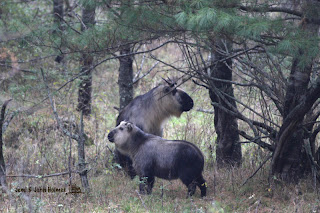
Wanglang, Ping Wu County, Nov 17th 2007.
Wanglang has a common border with Jiuzhaigou, and should have most of the same birds without the distraction of a zillion Chinese domestic tourists.... but it seems to be largely ignored by overseas birdwatchers.
This is part two of my "plug" for Wanglang....
Pere Armand David was one of the "Greats" of Chinese natural history pioneering. He spent many years in China, including a few months in 1869 near Baoxing, (in Sichuan) where the type specimen of Giant Panda was brought to him by his local hunters. David had earlier seen a panda skin in someone's house, knew it would be new to science, and sent out people to look for another one.
You might assume that "Parus davidi" was one of the many bird specimens collected Pere David. But no, it was that Russian, Berezovsky, again. Berezovsky collected specimens of P.davidi in southern Gansu in 1887 and named them after David (long departed to France) in tribute. There is no evidence that Pere David ever actually saw one.
Berezovsky also collected a rare and unusual parrotbill and named it after the greatest of the Russian explorers, Nikolai Przewalsky. But that's another story.






